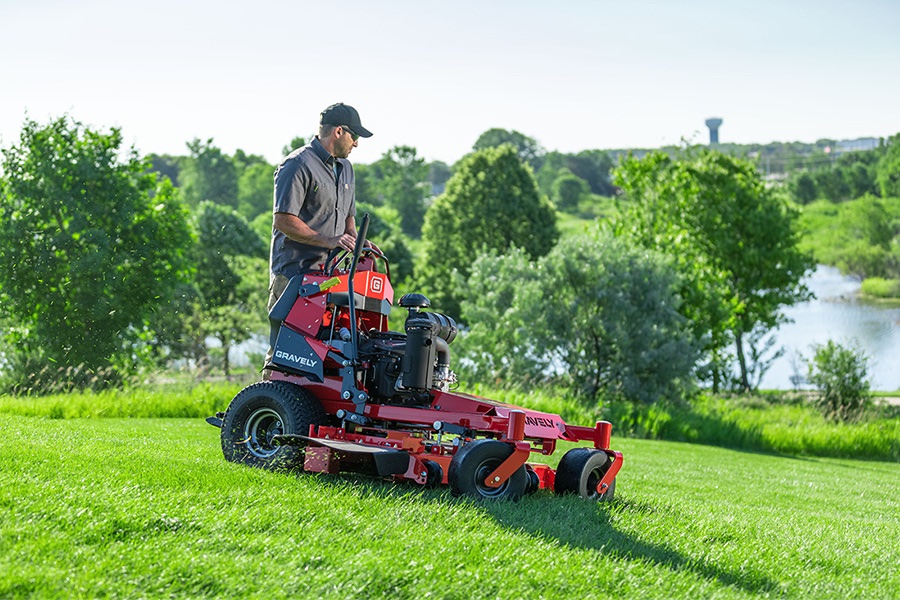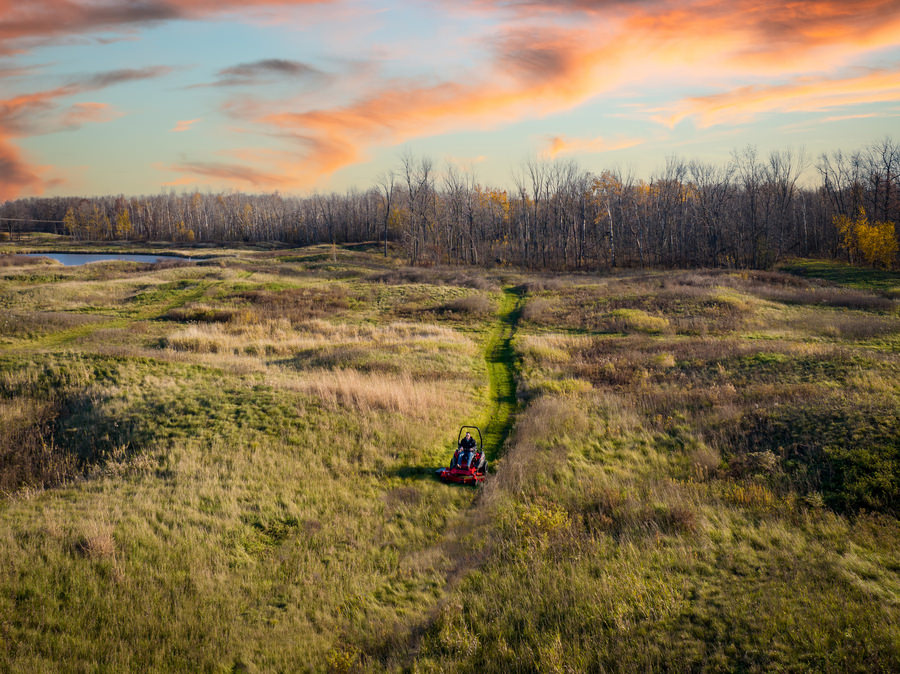Mowing on Rough Terrain & High Elevations
Landscapes come in all varieties; some flat and even, others steep and hilly. Higher elevations require specific lawn mower equipment and engines to perform at their best. The following includes tips for mowing in rough terrains and high elevations.

Mowing on Rough Terrain
There are several ways to help keep your personnel safe when mowing on rough terrains. Here are some important tips:
-
Use self-propelled push mowers to mow slopes.
-
Mow up and down instead of side to side.
-
Maneuver slowly on steep slopes and choose ground speed so you don't have to stop or shift while on a slope. Keep all movement on slopes slow and gradual.
-
Keep the brakes and transmissions properly adjusted and maintained.
-
Never mow on wet or damp grass because the tires may lose traction.
-
Install a rollover protection structure (ROPS) to your zero turn mower, if not already equipped. When used correctly, this can help protect the operator in the event of a rollover on steep landscapes.

Finding the Right Mower for Rough Terrain
Mowing on rough or uneven terrain can be difficult on your lawn mower and personnel. Bumps and jolts can cause fatigue and in the more severe cases, back pain. Finding the best mower for uneven ground can be difficult and confusing. If you are searching for the right lawn mower for rough terrain, we are here to help.
When searching for a zero turn mower for rough terrain, there are a few features you should look for:
-
Plush seats
-
Air ride seats
-
Suspension seats
-
Seat isolators
-
Steering lever grips
Additionally, landscapers have the option to purchase foot mat kits for zero turn models to help minimize vibration at the operator's feet.
Mowing in High Elevation
Internal combustion engines can have issues working in high elevations, like in Appalachia or the Rocky Mountains.This is because the air is thinner at higher elevations, making it more difficult for a naturally aspirated engine to breathe and to get the required amount of oxygen for combustion to occur and initiate the power stroke. Intake pulls gasoline and oxygen into the combustion chamber where they're pushed together in the compression stroke and ignited by a spark plug. This creates an explosion and generates power. Without oxygen, combustion is choked, the power stroke doesn't occur, and your engine sits idle.

What's a naturally aspirating engine?
It is important to purchase a zero turn mower that is naturally aspirated if you are mowing in high elevations. Naturally aspirated, or "naturally breathing" means that the oxygen intake of an engine is unassisted and controlled entirely by atmospheric pressure, which changes at varying altitudes.
Unless your carbureted lawn mower engine is equipped with a turbocharger or supercharger, your engine's oxygen intake is entirely dependent on the oxygen content of your environment.
Science of air density
Air density decreases in areas of higher elevation, meaning atoms of the gases in Earth's atmosphere (oxygen, nitrogen, hydrogen, etc.) also decrease.
In fact, air density decreases by one-third with every 10,000-foot climb above sea level. This means the ability for an engine to breathe and have combustion in Denver (5,280 feet above sea level) will be harder than lawn mower engines in New Orleans (one foot above sea level).
Think of engines like humans. As a mountain climber ascends Mount Everest, they breathe harder to compensate for the reduced amounts of oxygen pulled in with each breath. Engines operate the same way.
Engines compensate by using more fuel to work harder, making them less efficient and causing the engine to run rich (use too much fuel) – bogging the engine down, causing it to stall or even causing it to fail to start in high elevations.
Engines for high elevations
The solution for those working in high elevations is simple: ditch the combustion engine for an EFI (electronic fuel injection) option.
Unlike naturally aspirated engines, EFI engines use an ECU, or engine control unit, which controls the air-to-fuel mixture needed for combustion. The ECU knows the atmospheric pressure and draws in the required amount of air to make the engine operate efficiently. It does this with consistent power and better fuel economy at varying altitudes with varying oxygen densities.
Click here to explore the Gravely lineup and see which commercial mowers come equipped with EFI options.
